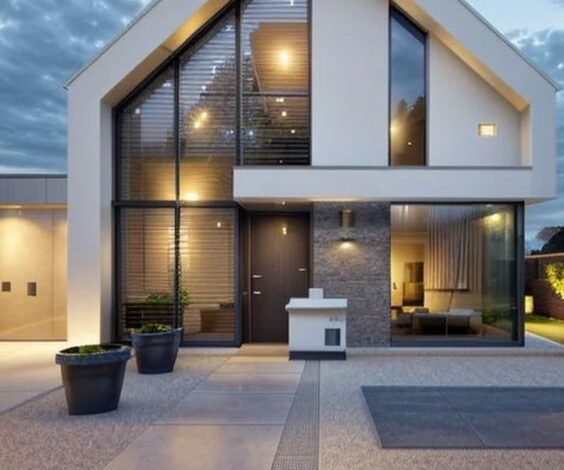
The architectural landscape is undergoing a revolution, largely driven by technological advancements such as 3D exterior rendering. No longer constrained by two-dimensional blueprints, architects and designers now have the power to visualize and manipulate structures with an unprecedented level of detail and realism. This shift is transforming not only how buildings are designed but also how they are presented to clients and stakeholders. At Kukeleka Studio, we specialize in leveraging these tools to bring architectural visions to life.
Why 3D Exterior Rendering is Essential?
3D rendering has become an essential part of the architectural design process for a number of reasons. First and foremost, it provides a more comprehensive and accurate representation of the project. Clients can visualize exactly how their building will look, complete with materials, textures, and lighting effects. This enhanced visualization helps minimize misunderstandings and aligns expectations between architects, builders, and clients. Moreover, 3D rendering simplifies the decision-making process by allowing clients to see potential modifications before construction begins.
Enhancing Design Communication
One of the most significant benefits of 3D exterior rendering services is its ability to facilitate better communication. Traditional architectural drawings and 2D sketches can often be difficult for clients to interpret, leading to confusion and revisions. 3D rendering bridges this gap by offering realistic visuals that are easy to comprehend, regardless of one’s architectural knowledge. Kukeleka Studio utilizes cutting-edge software and tools to create renderings that not only show the external features of the building but also reflect how it interacts with the environment, making it a valuable tool for presenting to both clients and regulatory bodies.
Realism and Accuracy in Presentations
Another key aspect of exterior rendering is the level of realism it provides. High-quality renderings can depict intricate details such as shadows, reflections, and even the effects of weather conditions on building materials. This helps in assessing the aesthetic appeal and functionality of the design in various settings. The technology’s ability to simulate real-world environments offers architects and designers the opportunity to foresee and address potential issues, ensuring that the final design is both visually stunning and structurally sound.
Cost and Time Efficiency
In addition to enhancing the visual appeal and accuracy of architectural designs, 3D rendering is also a cost-effective and time-efficient solution. By identifying potential flaws and making modifications during the design phase, it significantly reduces the likelihood of costly revisions once construction begins. At Kukeleka Studio, our team leverages this technology to streamline the design process, ensuring projects are delivered on time and within budget. The clarity provided by 3D renderings also reduces the need for numerous design iterations, making it easier to finalize designs quickly.
Adapting to the Digital Age
The shift to 3D rendering is part of a broader move towards digitalization in architecture. As the industry adapts to digital technologies, there is a growing emphasis on creating interactive and immersive experiences. Virtual reality (VR) and augmented reality (AR) are also becoming increasingly integrated with 3D rendering, allowing clients to experience a virtual walk-through of their future property. Kukeleka Studio is at the forefront of this innovation, offering solutions that combine traditional rendering techniques with modern digital tools to create immersive architectural presentations.
The Role of 3D Rendering in Sustainable Design
Sustainability is a critical concern in modern architecture, and 3D rendering plays a crucial role in promoting eco-friendly designs. Through simulations, architects can evaluate the environmental impact of their designs, optimizing elements such as natural lighting, ventilation, and energy consumption. This not only aids in creating sustainable structures but also helps clients understand the long-term benefits of environmentally conscious architecture.
Conclusion
3D rendering is more than just a tool—it’s shaping the future of architecture. It allows architects, designers, and clients to work together more effectively, resulting in buildings that are aesthetically pleasing, functional, and sustainable. At Kukeleka Studio, we are committed to pushing the boundaries of what’s possible in architectural visualization, using 3D rendering to turn ambitious concepts into stunning realities. As the technology continues to evolve, the potential applications and benefits of rendering will only expand, making it an indispensable asset for the future of architecture.


